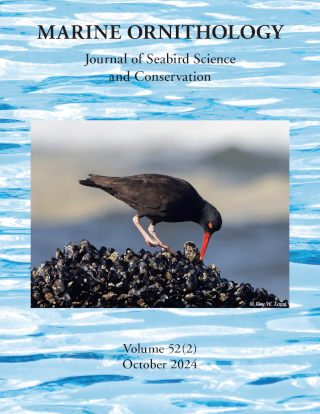Volume 52, No. 2

Volumes > 38 (2010-->)
- Volume 53, No. 2, 2025
- Volume 53, No. 1, 2025
- Volume 52, No. 2, 2024
- Volume 52, No. 1, 2024
- Volume 51, No. 2, 2023
- Volume 51, No. 1, 2023
- Volume 50, No. 2, 2022
- Volume 50, No. 1, 2022
- Volume 49, No. 2, 2021
- Volume 49, No. 1, 2021
- Volume 48, No. 2, 2020
- Volume 48, No. 1, 2020
- Volume 47, No. 2, 2019
- Volume 47, No. 1, 2019
- Volume 46, No. 2, 2018
- Volume 46, No. 1, 2018
- Volume 45, No. 2, 2017
- Volume 45, No. 1, 2017
- Volume 44, No. 2, 2016
- Volume 44, No. 1, 2016
- Volume 43, No. 2, 2015
- Volume 43, No. 1, 2015
- Volume 42, No. 2, 2014
- Volume 42, No. 1, 2014
- Volume 41, No. 2, 2013
- Volume 41, No. 1, 2013
- Volume 41, Special Issue, 2013
- Volume 40, No. 2, 2012
- Volume 40, No. 1, 2012
- Volume 39, No. 2, 2011
- Volume 39, No. 1, 2011
- Volume 38, No. 2, 2010
- Volume 38, No. 1, 2010
Volumes 28-37 (2000-09)
- Volume 37, No. 3, 2009
- Volume 37, No. 2, 2009
- Volume 37, No. 1, 2009
- Volume 36, No. 2, 2008
- Volume 36, No. 1, 2008
- Volume 35, No. 2, 2007
- Volume 35, No. 1, 2007
- Volume 34, No. 2, 2006
- Volume 34, No. 1, 2006
- Volume 33, No. 2, 2005
- Volume 33, No. 1, 2005
- Volume 32, No. 2, 2004
- Volume 32, No. 1, 2004
- Volume 31, No. 2, 2003
- Volume 31, No. 1, 2003
- Volume 30, No. 2, 2002
- Volume 30, No. 1, 2002
- Volume 29, No. 2, 2001
- Volume 29, No. 1, 2001
- Volume 28, No. 2, 2000
- Volume 28, No. 1, 2000
Volumes 18-27 (1990-99)
- Volume 27, No. 1 & 2, 1999
- Volume 26, No. 1 & 2, 1998
- Volume 24, No. 1 & 2, 1996
- Volume 25, No. 1 & 2, 1997
- Volume 23, No. 2, 1995
- Volume 23, No. 1, 1995
- Volume 22, No. 2, 1994
- Volume 22, No. 1, 1994
- Volume 21, No. 1 & 2, 1993
- Volume 20, No. 1 & 2, 1992
- Volume 19, No. 1, 1991
- Volume 18, No. 1 & 2, 1990
Volumes 5-17 (1978-89) a.k.a 'Cormorant'
- Volume 17, No. 1 & 2, 1989
- Volume 16, No. 1, 1988
- Volume 16, No. 2, 1988
- Volume 15, No. 1 & 2, 1987
- Volume 14, No. 1 & 2, 1987
- Volume 13, No. 2, 1986
- Volume 13, No. 1, 1986
- Volume 12, No. 2, 1985
- Volume 12, No. 1, 1985
- Volume 11, No. 1 & 2, 1984
- Volume 10, No. 2, 1983
- Volume 10, No. 1, 1983
- Volume 9, No. 2, 1982
- Volume 9, No. 1, 1982
- Volume 8, No. 2, 1981
- Volume 8, No. 1, 1981
- Volume 7, 1980
- Volume 5, 1978
Search by author or title:
A regionally significant population of White-tailed Tropicbirds Phaethon lepturus on Kurehdhoo (Lhaviyani Atoll), Republic of the Maldives.
Citation
RUSSELL, J.C., STEIBL, S. & STEVENS, G.M.W. (2024). A regionally significant population of White-tailed Tropicbirds Phaethon lepturus on Kurehdhoo (Lhaviyani Atoll), Republic of the Maldives.
Marine Ornithology, 52(2),
191-196.
http://doi.org/10.5038/2074-1235.52.2.1581
Abstract
Coral atoll islands are important breeding sites for tropical seabird species, but on many of these islands, disturbances from humans and introduced mammals have extirpated breeding colonies. In the Republic of the Maldives (Indian Ocean), little published information exists on the location and extent of seabird breeding colonies. Here, we document what appears to be a regionally significant breeding site for White-tailed Tropicbirds Phaethon lepturus on Kurehdhoo, the northern-most inhabited island of Lhaviyani Atoll in the central Maldives. We systematically surveyed the entire island on two separate occasions, six months apart, to count the number of White-tailed Tropicbird nests, their breeding stage, and habitat. We counted 128 and 202 nests at all breeding stages, indicating year-round breeding and an estimated population size of about 800 adults. This population is most likely the outcome of 14 y of sustained rat control across the entire island in the presence of native atoll vegetation. The effort has allowed White-tailed Tropicbirds to rapidly increase in numbers and a small population of Tropical Shearwaters Puffinus bailloni to establish on the island. These discoveries demonstrate that land-based seabird conservation opportunities exist in association with island resort land use in the Republic of the Maldives.